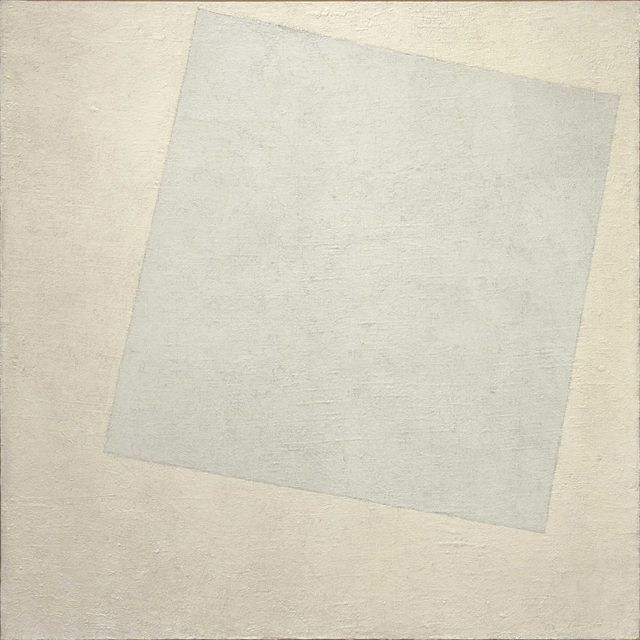落花风
洛阳城东桃李花,飞来飞去落谁家?Malevich, Suprematist Composition: White Square on White
Influenced by Cubism and Futurism, Kazimir Malevich sought something different amidst the social context of the Bolshevik Revolution in Russia. He created Suprematism by rejecting representation, materialism, and elitism altogether. With little left to do, instead of presenting nothing on a blank surface, he emphasized doing something with minimal trace. Thus, he first conceived the idea of the black square on a white board - The Black Square (1915). It removed much distracting information while drawing viewers into a black void, aiming to provide viewers with "the supremacy of the pure feeling of creative art."
A few years later (1918), he created "White Square on White," further reducing the intensity of black and white contrast. This diminished the tendency for viewers to feel burdened by objects when looking at art, freeing their perception. I believe this work vividly describes a world of emptiness, where nothing is real but an illusion. Both of his works remind me of my own experience. It's akin to sitting down, gently closing your eyes, and meditating, sometimes with flashing images floating in your mind. It's non-representational, detached from materialism, focusing solely on the state of the mind. Unlike the black square, which remains still and fixed in the middle, the white square drifts. In Zen teaching, during meditation, the mind and brain are likened to a monkey and a horse; they can't sit still, and one must gently guide them back to focus. While I'm uncertain if Malevich studied Zen Buddhism, I may be interpreting his work incorrectly, yet he depicted these concepts through his art.




